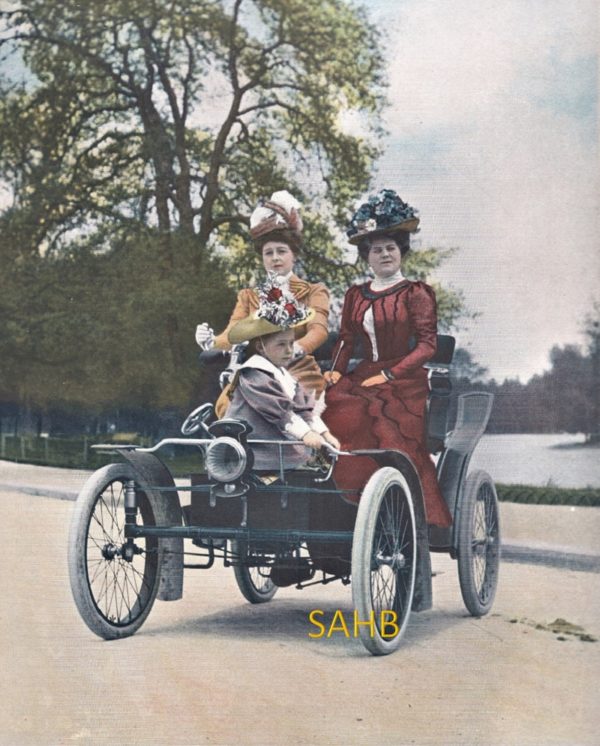
Reaction to this coloured photograph from 1899 will very much depend upon one’s point of view – from “what fascinating front suspension”, through “what lovely ladies in their fine clothes” to “that child had better hang on tight.” We selected it for just that reason – there’s so much to see and enjoy.
Amand Decauville built his workshop in 1853 to make equipment for distilleries; he also owned a large agricultural estate and stone quarries. His eldest son, Paul (1846-1922), inherited these at the age of 25, and so came to invent the light and portable narrow-gauge track fastened to steel sleepers that became known all over the world as the “Decauville”.
Decauville were always primarily manufacturers of locomotives, track and rolling stock – and were responsible for building many small country railways throughout France and in other countries. Their system was adopted by the military, and used by the French and British for trench railways during the First World War.
Motor cars were therefore merely a temporary diversion for the company. Société des Voitures Automobiles Decauville was set up in 1897 as a subsidiary, and the factory started producing motor cars in 1898. The first car was designed by Joseph Guédon and Gustave Cornilleau.
Our Snapshot shows one of these early cars, a tiller-steered three-seater in the voiturette (cyclecar) class, called a voiturelle. As we can see, it had independent front suspension by transverse leaf spring. These cars had no rear suspension. They were powered by two single-cylinder air-cooled De Dion-Bouton engines sharing a common crankcase, mounted under the seat and driving the back axle through an unlubricated two-speed transmission.
Decauville entered motor races, winning the voiturette class of the 1898 Paris–Amsterdam–Paris Trial.
The original model was joined in 1900 by a 5-hp water-cooled model and then an 8-hp twin. In 1902, the voiturelles were dropped and replaced by a 10-hp sidevalve twin with engine, gearbox, and clutch cast as a unit. It was one of these models that Henry Royce purchased. And the rest is history.
Decauville closed its car factory in 1911, but the parent company continued to produce locomotives, rolling stock and road-building equipment, and celebrated its centenary in 1953 with a delightful commemorative history that your webmaster found in a shop in Paris only recently.







Leave a Comment